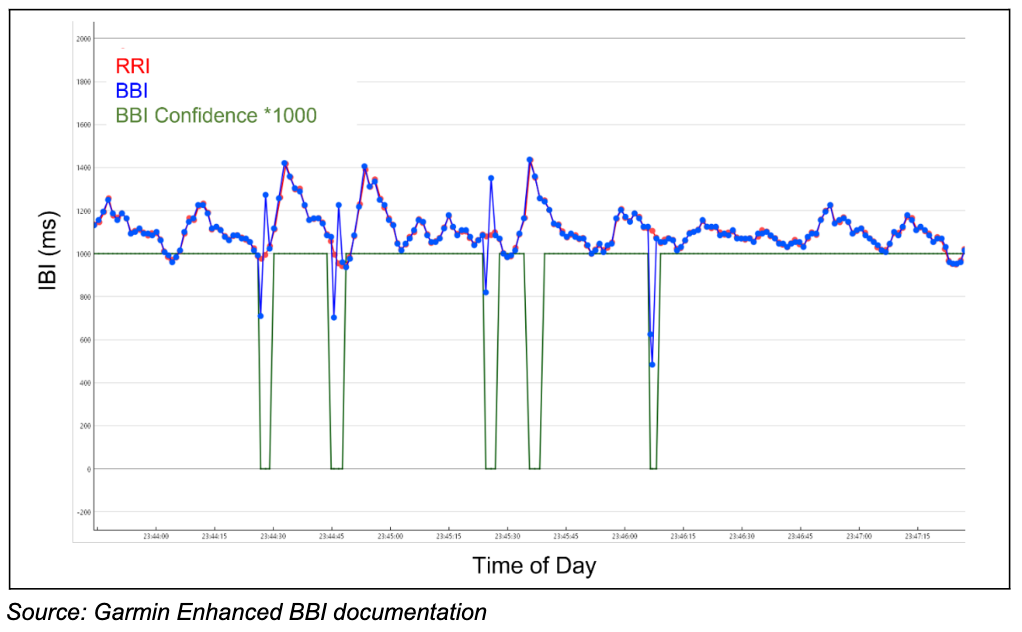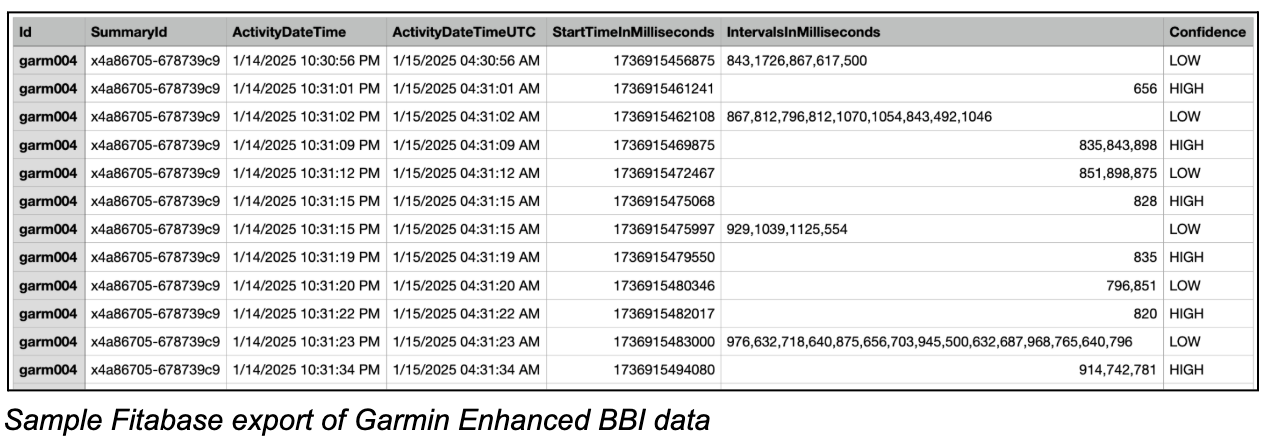
What is EBBI?
Enhanced Beat to Beat Interval data is ideal for researchers looking to derive their own metrics and classifications, like HRV. This dataset includes the time beat signature, as well as a confidence variable that indicates whether a beat might be of higher error. This confidence metric gives researchers full control over whether to remove potential outliers from data captured, making the dataset much more accurate than previous versions.
It is captured during sleep directly from the wrist. It does not require a chest strap or any additional app downloads to be used within Fitabase.
How is it different from past BBI offerings from Garmin?
Previous iterations of the BBI offering from Garmin prioritized availability of the signal, even when the signal was potentially low-quality. Garmin changed the way it processes for the Enhanced BBI metric, leading to a more accurate dataset, as well as greater options for researchers who want to apply the data to the studies in the most relevant way. To achieve this, Garmin added a confidence score to each beat reading, which allows researchers to understand which readings may be weaker than others and filter them out as needed.
How can I tell whether a beat reading is weak or strong?
In the beat-to-beat interval exports, found in our bulk export section for Garmin devices, you’ll see a Confidence Variable score of either LOW or HIGH.

Why would a reading receive a low rating?
- According to Garmin, motion is the most common reason for readings. In some cases where extreme motion is detected, Garmin may not provide a beat measurement at all and you may see a gap in BBI readings until motion levels off.
- Poor fit issues (too loose or too tight) can result in a low confidence rating. The signal may also suffer if the user puts too much pressure on the watch by laying on the limb that’s wearing the device.
- Abnormally high HRV will lead to a low confidence score, as well.
Does the way it’s collected differ from how other types of data are collected?
No. All a participant has to do is wear a Garmin device properly on their wrist. No additional chest strap or mobile apps are required to gather EBBI data for use in the Fitabase platform.
What devices can I use to get this data?
Garmin EBBI data can be collected using any Garmin device with a gen 4 sensor or higher. The Vivosmart 5 and Venu 3 devices are popular for research.
Does Fitabase Collect EBBI from the Garmin SDK or the Garmin API?
In early 2025, Fitabase collaborated with Garmin to allow researchers to collect EBBI data using a new API method which transmits EBBI data to Fitabase using the Garmin API. There are several advantages to this method:
- Participants only need to install the standard Garmin Connect mobile app. Once a profile is OAuth-connected to Fitabase, the Garmin mobile app then communicates to the device a setting that makes sure EBBI collection is enabled.
- Because the Garmin Connect app takes advantage of background processing related to managing the bluetooth of the Garmin devices, the background syncing is more robust and frequent and does not require opening the app as often, and usually not unless there’s a connection issue.
- Garmin maintains a second copy for a period of time which allows for a buffer for Fitabase to make sure it can accurately pull this data. This ensures that short downtime issues on either platform do not affect the durable collection of this data.